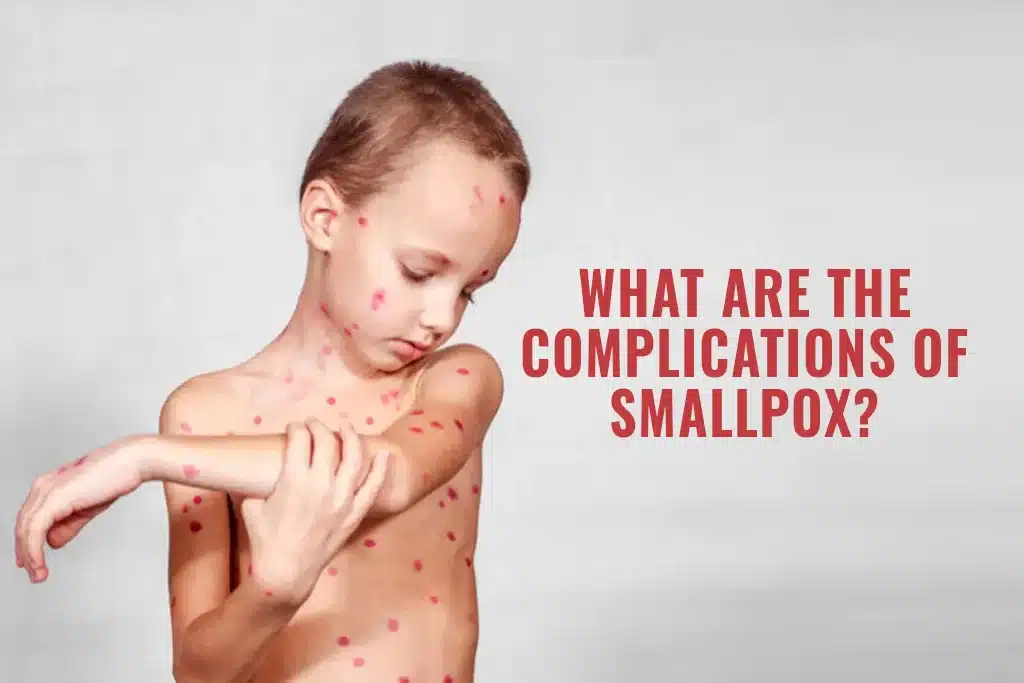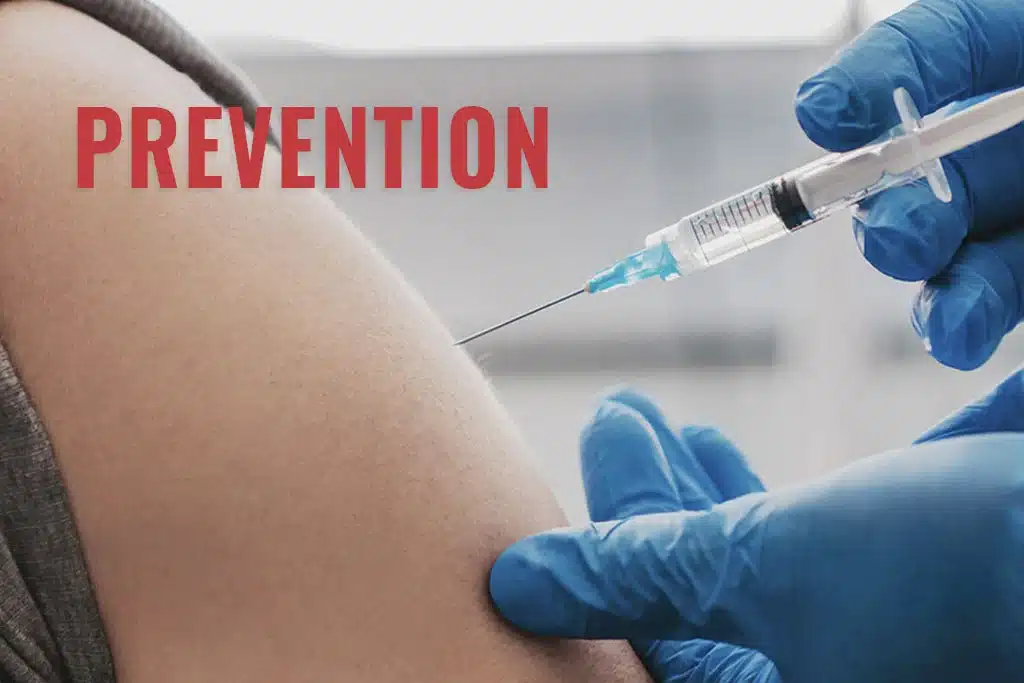Are you seeking a comprehensive guide on smallpox and how it was dealt with through the vaccination? We have got you covered. This risky illness was induced by the variola virus. Frequently, disfiguring lesions remained as a consequence of the severe rash. It was the precursor to the development of a vaccine.
However, extinct status has been attributed to smallpox since 1980, and cases have ceased to occur since 1978. But knowing the extinct diseases will help you prevent yourself in the future. In this blog, we will help you know how smallpox was the greatest threat once and how vaccination eradicated the issue.
What is smallpox?
Smallpox is an acute infectious disease that is induced by the variola virus, an orthopoxvirus family member. It claimed the lives of millions of individuals before its eradication, making it one of the deadliest diseases ever discovered by mankind. Its estimated antiquity is at least three millennia.
It was a harmful disease, that claimed the lives of hundreds of millions of individuals before its eradication. Frequently, it produced deformity scarring in the form of a rough, blistering rash. It caused mortality in approximately one out of every three cases.
Does smallpox still exist?
Smallpox is extinct in humans and does not spread naturally. The last 45 years have seen no instances of smallpox. This virus is kept in reserve at two laboratories (one in the United States and one in Russia) for scientific purposes alone.
What are the symptoms of smallpox?

Smallpox symptoms progress over time and include:
- elevated temperature.
- Severe headache.
- back pain.
- stomach ache.
- extreme weakness and exhaustion.
- throwing up.
- rash that originates in your mouth, moves to your face, and eventually spreads throughout your entire body
sores, followed by rash-related hard pustules.
The first symptoms to manifest are fever, headache, and exhaustion. They last for two to four days, although when the rash appears, the fever may stay the same or return. After that, the rash develops in phases that last a few days each.
What does a smallpox rash look like?
Your mouth and face are where the smallpox rash first appears, and it soon spreads over most of your body. It begins as a rash and progresses to hard lumps that eventually develop scabs. When someone has an ordinary case, which is the most frequent kind, the rash progresses through multiple stages:
Initial rash: A rash appears on your tongue, as well as the interiors of your mouth and throat, following the onset of symptoms. Your mouth’s red spots turn into sores that eventually burst.
Rash spreading: Your face, arms, legs, back, and chest are next affected by the rash. It covers your entire body, including the palms of your hands and the soles of your feet, in about a day.
Pus (thick fluid) collects in skin bumps: Every bump might have a dent in the center of it. The bumps fill with fluid over approximately two days.
Scratches and pustule rash: Pustules—firm, spherical lumps—develop from bumps. The pustules develop crusty scabs during the following ten days.
Scabs decide. The scabs peel off over a week or so, leaving scars behind.
What causes smallpox?
The smallpox virus is the cause of it. Variola comes in two varieties: variola minor, often known as variola alastrim, and variola major. The majority of cases and deaths were caused by Variola major. Similar but less severe symptoms were presented with Variola mild. 1% of cases resulted in death, while nearly 30% of cases with variola major were fatal.
How did smallpox spread?
Through intimate, face-to-face contact, smallpox spread. For example, coughing or conversing with someone nearby can spread it. Additionally, it could be transmitted by coming into contact with contaminated objects (such as clothes or bedding).
What are the complications of smallpox?

The most frequent smallpox complication was severe scarring. Additional issues were as follows:
blindness
encephalitis
inflammation of the lungs’ tiny air sacs (bronchopneumonia)
infections caused by bacteria
arthritis
Why is smallpox so fatal?
Although the exact cause of death from smallpox is unknown, researchers believe that several causes, such as:
- Large doses of the virus cytotoxically harm and destroy cells.
- Kidney failure.
- pneumonia-related lung damage. Breathing becomes difficult as a result, and your tissues start to receive less oxygen.
- shock with hypovolemia.
- Hemorrhagic smallpox causes both organ failure and blood loss.
Prevention

In the late 1700s, a vaccine for smallpox was developed; this was made possible by the discovery of physician Edward Jenner, who verified historical tales of dairymaids becoming immune after being exposed to cowpox. The smallpox and cowpox viruses are remarkably similar, as we now know. Therefore, persons who contracted cowpox, a minor ailment, and developed an immunity to it also developed an immunity.
Jenner started vaccinating individuals against smallpox by infecting them with cowpox, which resulted in the first vaccination. The word “vaccine” comes from the Latin word “vacca,” which means cow. These days, vaccinia is a virus that resembles smallpox enough to confer immunity without really making you sick and is used to make the vaccine.
At what age is the smallpox vaccine given?
The American Academy of Pediatrics Committee on the Control of Infectious Diseases and the Public Health Service Advisory Committee on Immunization Practices recommend that main smallpox vaccination be delayed until after the first birthday.
How long does the smallpox vaccine last?
You can be protected from smallpox for three to five years after receiving a vaccination. Its power to keep you safe after that point diminishes. You could require a booster shot if you require long-term protection.
When did the smallpox vaccine stop?
The public can no longer obtain the smallpox vaccination. The United States discontinued its routine immunization program in 1972. The World Health Organization (WHO) declared the eradication in 1980. As a result, there is no need to safeguard the general people from the illness.
When was the smallpox vaccine created?
In response to the cowpox incident, Phipps became ill for a few days before fully recuperating. Jenner used material from a human smallpox sore two months later, in July 1796, to inoculate Phipps to gauge his level of resistance. Phipps, who was the first to receive vaccination, continued to enjoy excellent health.
What is variolation?
One of the earliest immunization methods was variation. Individuals would intentionally contract smallpox by coming into contact with the variola virus. They would either inhale a powder derived from the scabs or scratch their skin using the pus from smallpox sores. They were protected from contracting it after developing a less severe variation-induced sickness. It is believed that this practice has existed for hundreds of years.
Why does the smallpox vaccine leave a scar?
In contrast to most contemporary vaccinations, the smallpox vaccine uses vaccinia, a live, unmodified smallpox virus. Rather than administering an injection, a medical professional pricks your shoulder and dips a two-pronged needle into the virus. At the vaccination site, you contract vaccinia. A blister that forms as a result of the infection eventually leaves a scar.
Vaccine recipients of this type of vaccine are required to closely observe the instructions for maintaining the immunization site. If they don’t, they could spread the vaccinia virus to another person. This vaccination is available in two types: APSV and ACAM2000.
An attenuated (weakened) virus and a more conventional dose are utilized in the JYNNEOSTTM vaccination, which is also used to prevent pox. Compared to other smallpox vaccinations, it carries a decreased risk of side effects. It is administered subcutaneously by medical professionals twice, separated by four weeks.
Conclusion
Smallpox was one of the deadliest illnesses on the globe for many centuries. Most of us have never even had to consider it in this day and age. The smallpox has not affected anyone in about fifty years. Additionally, the United States is equipped with medications and vaccines in case there is ever another outbreak, which is extremely improbable given the efforts of public health. ER of Watauga is among the top urgent healthcare facilities in providing specialized care, cutting-edge diagnostic tests, and effective treatment for infectious diseases. Contact us now to book an appointment or to get further information.
FAQs
What caused smallpox to die off?
Worldwide the elimination of smallpox took place by vaccination efforts spearheaded by the World Health Organization (WHO). Along with wide immunization, the plan called for surveillance—finding and containing cases to stop them from spreading. It was the first illness to be declared eliminated by human effort, with the last known natural incidence affecting Somalia in 1977 and the WHO announcing it removed in 1980.
Which posed the most challenges to the eradicated smallpox epidemic?
Concerns about overcoming vaccine resistance stemming from cultural or religious beliefs, the need for nearly universal vaccination coverage to prevent epidemics, and the logistical challenges associated with delivering immunizations to rural areas were among the biggest. Separating smallpox from similar infections like chickenpox was especially important in areas where the disease was becoming extinct.
Do any current risks of smallpox exist yet?
These days, the main worry linked to smallpox is the potential for bioterrorism, as viral samples are kept in very secure laboratories in China and Russia. Questions about the safety and ethics of keeping certain virus strains have been raised by the prospect that the virus could be used as a biological weapon.
What made smallpox so perilous, and what does it consist of?
It is a severe infectious disease, initiated by the variola virus. It was highly transmissible, highly lethal, and characterized by a distinctive rash and fever on the skin, which frequently resulted in permanent, profound scarring and blindness among survivors. In history, it was among the most dreaded maladies on account of its extremely high mortality rate.
From the total eradication of smallpox, what can be deduced?
Using the eradication of smallpox, the effectiveness of international collaboration and immunization is demonstrated. This highlights the criticality of promptly responding to contain epidemics, the significance of surveillance, and the uninterrupted support for public health initiatives. Infectious disease control in other regions of the globe could be modeled after the achievement of this endeavor.






